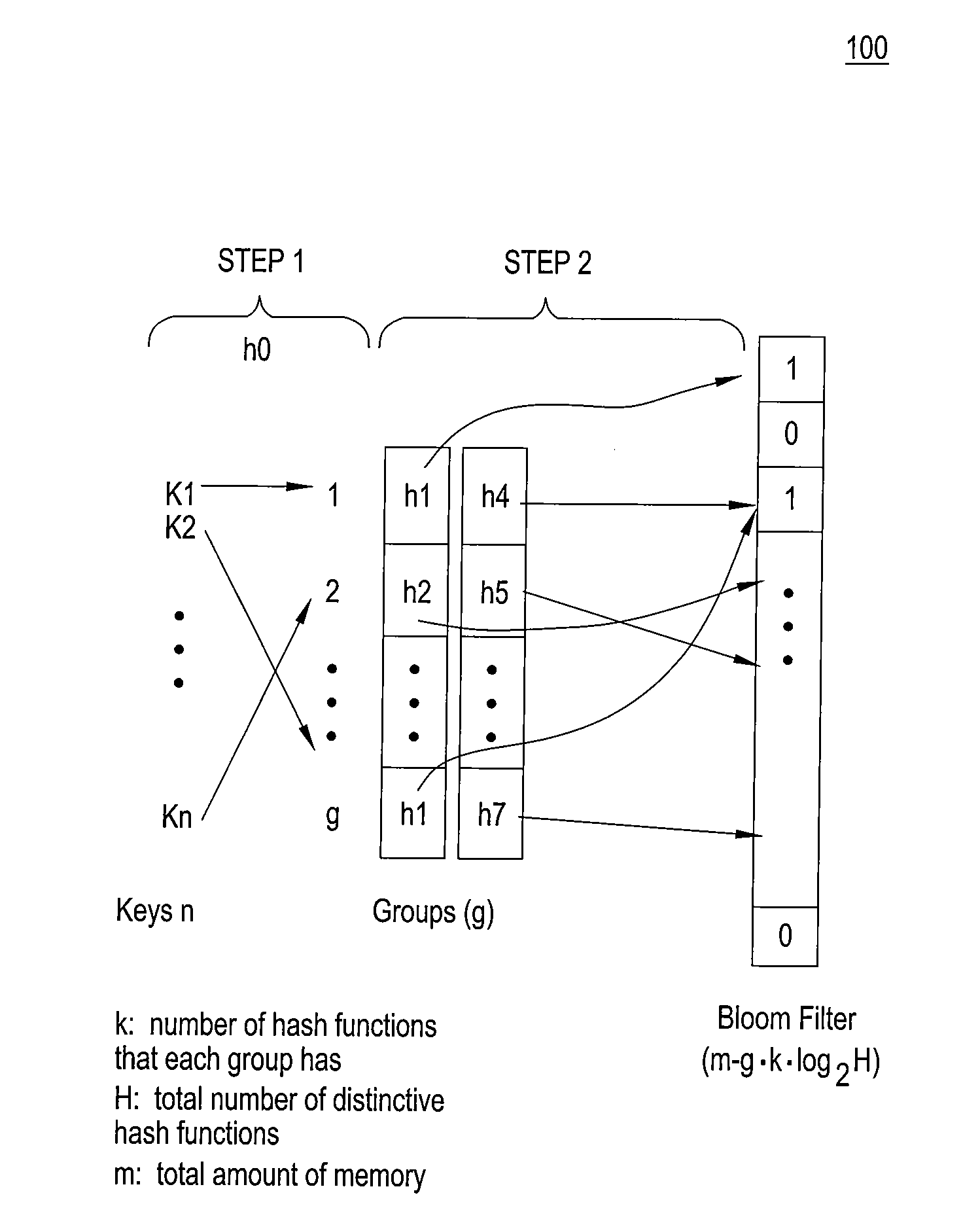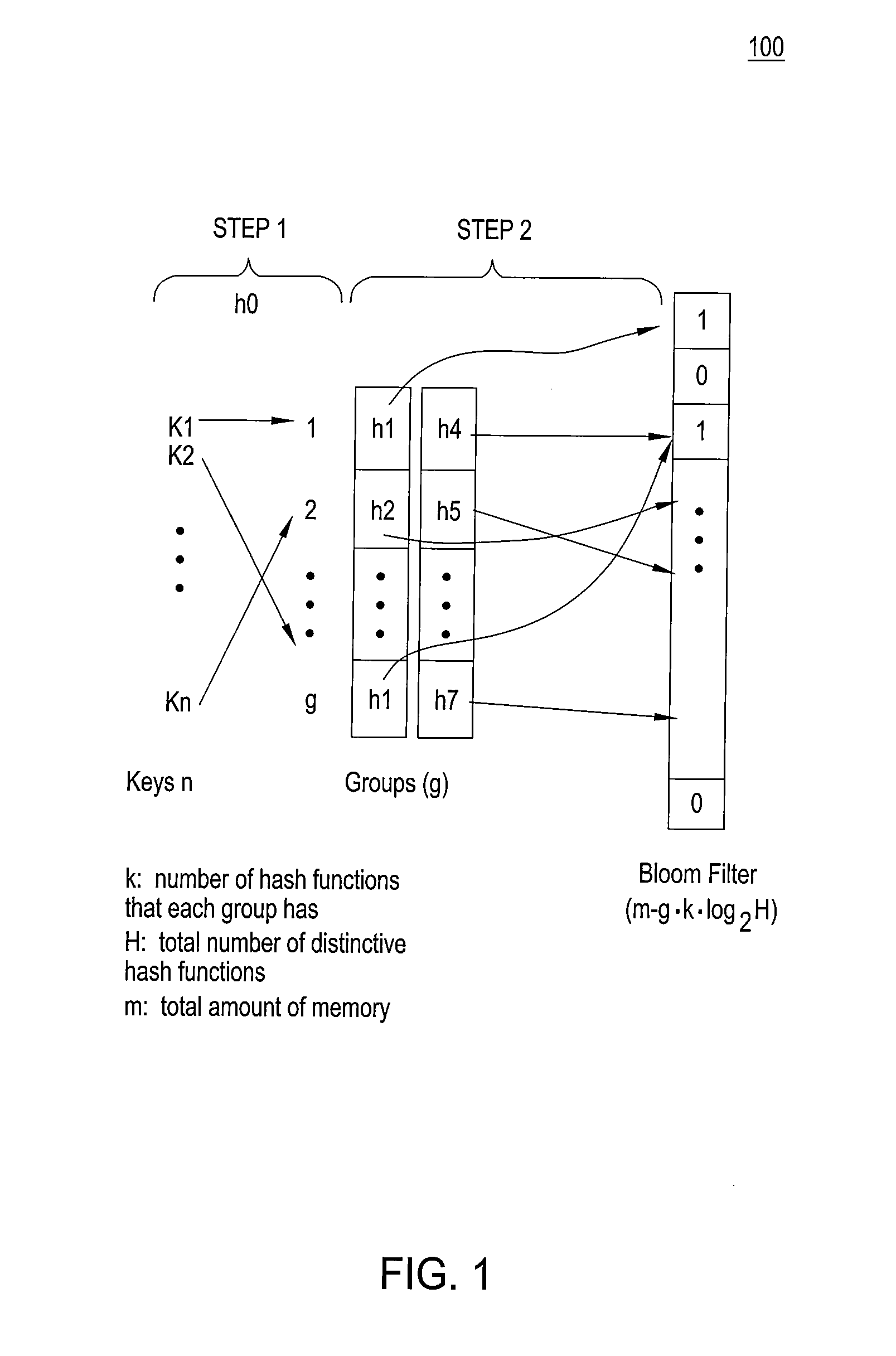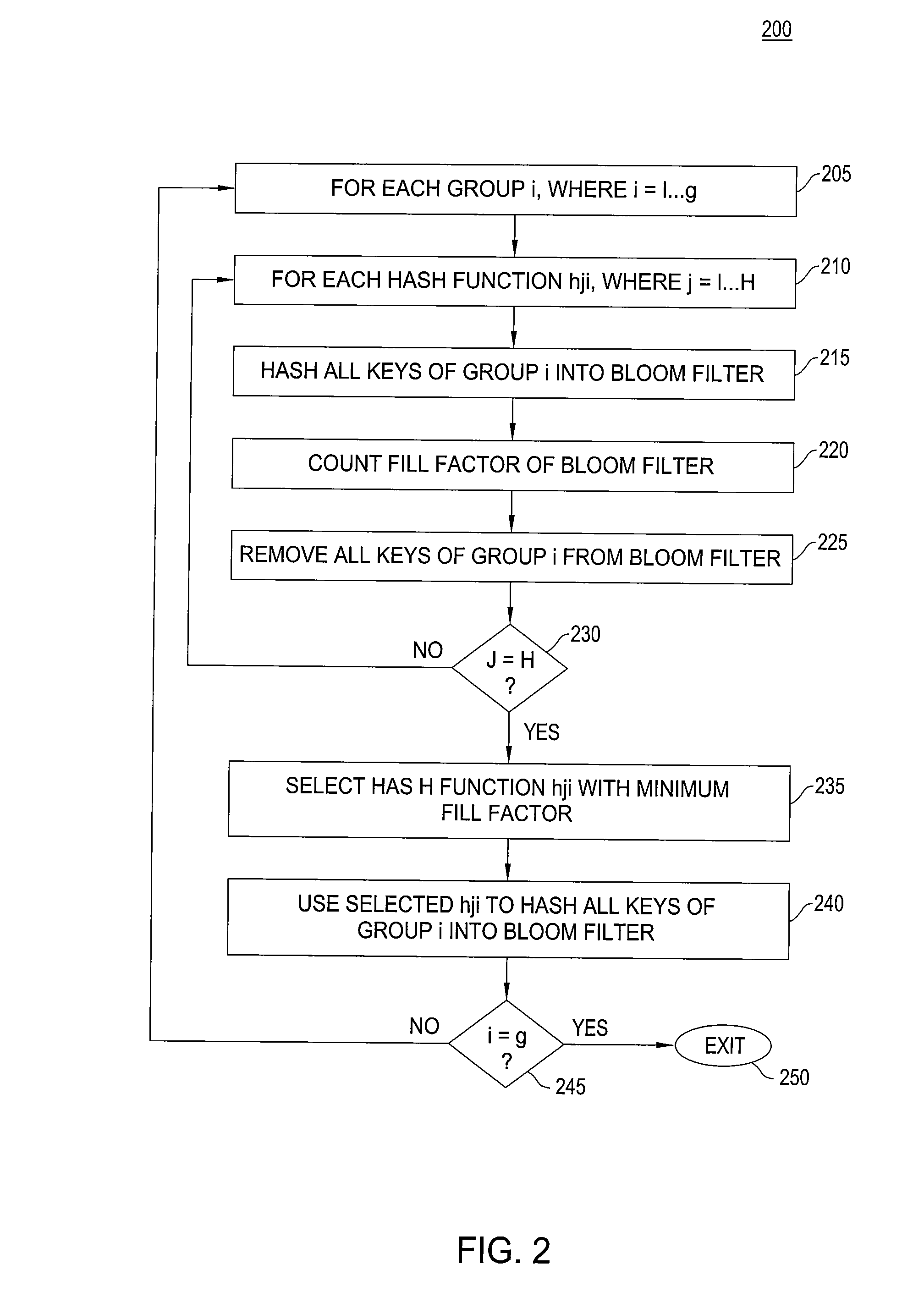High accuracy bloom filter using partitioned hashing
a filter and high-accuracy technology, applied in the field of information processing systems, can solve the problems of too many false positives and false positives, and achieve the effect of reducing the false positive probability and lowering the false positive probability
- Summary
- Abstract
- Description
- Claims
- Application Information
AI Technical Summary
Benefits of technology
Problems solved by technology
Method used
Image
Examples
Embodiment Construction
[0013]The main tradeoff in using a Bloom filter based approach to set membership queries is that the Bloom filter only performs a probabilistic test and that the test can result in false positives. This false positive probability must be tuned to match application needs by appropriate choice of the number of hashes to be performed on each key and the bit vector size (memory used). For high-speed implementation, the available memory is often determined by the amount of on-chip memory in devices such as field-programmable gate arrays that are used to implement the Bloom filter. Ideally, the false positive probability should be made as low as possible given the constraints on the available memory, the number of hashes that can be performed on each key and the number of keys that must be supported. The false positive rate of the Bloom filter is proportional to the number of ones in the Bloom Filter. The number of ones may be reduced by searching for a good set of hash functions for a re...
PUM
 Login to View More
Login to View More Abstract
Description
Claims
Application Information
 Login to View More
Login to View More - R&D
- Intellectual Property
- Life Sciences
- Materials
- Tech Scout
- Unparalleled Data Quality
- Higher Quality Content
- 60% Fewer Hallucinations
Browse by: Latest US Patents, China's latest patents, Technical Efficacy Thesaurus, Application Domain, Technology Topic, Popular Technical Reports.
© 2025 PatSnap. All rights reserved.Legal|Privacy policy|Modern Slavery Act Transparency Statement|Sitemap|About US| Contact US: help@patsnap.com



